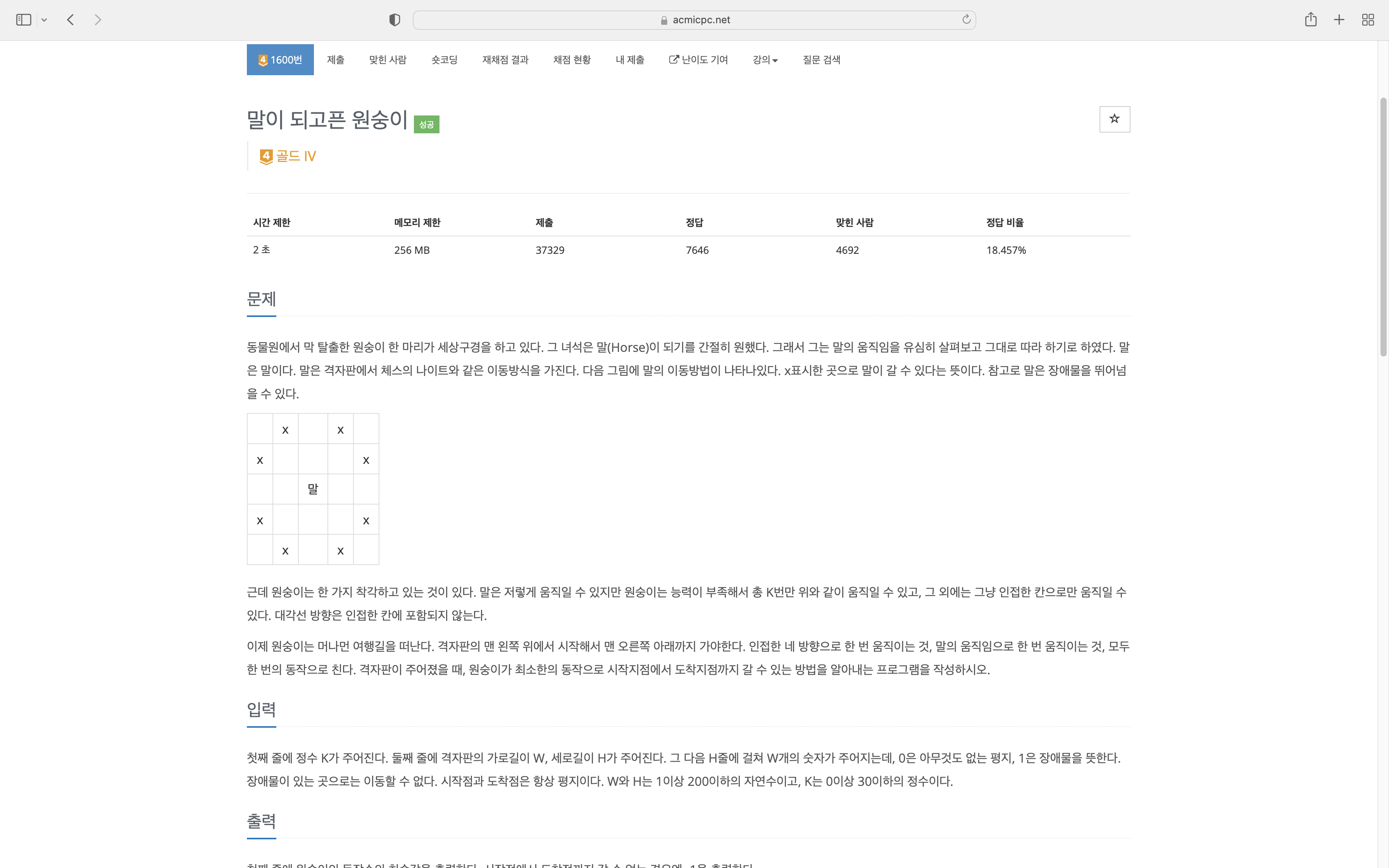💻 C++ 기반
✔️ 2206번과 접근 방식 비슷
#include <cstdio>
#include <queue>
#include <utility>
#include <algorithm>
#define MAX_LENGTH 201
#define MAX_K 31
using namespace std;
int board[MAX_LENGTH][MAX_LENGTH];
int dist[MAX_LENGTH][MAX_LENGTH][MAX_K];
int dirY_horse[8] = {-1, -2, -2, -1, 1, 2, 2, 1};
int dirX_horse[8] = {-2, -1, 1, 2, -2, -1, 1, 2};
int dirY[4] = {0, 0, 1, -1};
int dirX[4] = {1, -1, 0, 0};
int main()
{
int K, W, H;
scanf("%d", &K);
scanf("%d %d", &W, &H);
for (int i = 0; i < H; i++)
{
for (int j = 0; j < W; j++)
{
scanf("%d", &board[i][j]);
}
}
for (int i = 0; i < H; i++)
{
for (int j = 0; j < W; j++)
{
for (int k = 0; k <= K; k++)
{
dist[i][j][k] = -1;
}
}
}
// bfs
queue<pair<pair<int, int>, int> > q;
q.push(make_pair(make_pair(0, 0), 0)); // y좌표, x좌표, 말처럼 이동한 횟수
for (int k = 0; k <= K; k++)
{
dist[0][0][k] = 0;
}
while (!q.empty())
{
int curY = q.front().first.first;
int curX = q.front().first.second;
int curCnt = q.front().second;
q.pop();
if (curY == H - 1 && curX == W - 1)
{
printf("%d", dist[curY][curX][curCnt]);
return 0;
}
if (curCnt < K)
{
for (int i = 0; i < 8; i++)
{
int nextY = curY + dirY_horse[i];
int nextX = curX + dirX_horse[i];
if (nextY < 0 || nextY >= H || nextX < 0 || nextX >= W)
{
continue;
}
if (dist[nextY][nextX][curCnt + 1] >= 0 || board[nextY][nextX] == 1)
{
continue;
}
q.push(make_pair(make_pair(nextY, nextX), curCnt + 1));
dist[nextY][nextX][curCnt + 1] = dist[curY][curX][curCnt] + 1;
}
}
for (int i = 0; i < 4; i++)
{
int nextY = curY + dirY[i];
int nextX = curX + dirX[i];
if (nextY < 0 || nextY >= H || nextX < 0 || nextX >= W)
{
continue;
}
if (dist[nextY][nextX][curCnt] >= 0 || board[nextY][nextX] == 1)
{
continue;
}
q.push(make_pair(make_pair(nextY, nextX), curCnt));
dist[nextY][nextX][curCnt] = dist[curY][curX][curCnt] + 1;
}
}
printf("-1");
return 0;
}
